"For something to be beautiful, it doesn't have to be pretty.”
Rei Kawakubo
Avant-Garde: the archetype of boundary-breaking, where garments are concepts, silhouettes are reimagined, and style is an act of defiance.
The core stylistic elements of Avant-Garde fashion are experimental silhouettes, deconstruction + reconstruction, conceptual influences, unconventional materials, and anti-trend ideology.
The Avant-Garde, both as an aesthetic and ideological concept, was first expressed in the outpouring of artistic movements that followed the devastation of World War I. Dadaism, Surrealism, Futurism, Bauhaus, and Artaud’s Theatre of Cruelty loudly rebelled against traditional logic, institutional complacency, and aesthetic convention, believing all of these concepts responsible for the torment of WWI.
The world craved provocation, abstraction, and psychological depth, something to give meaning in the midst of despair. Combined, these are the movements that created the foundation for Avant-Garde fashion, From Tristan Tzara’s embrace of chaos in the Dada Manifesto (1918), André Breton’s call for irrational liberation in the Surrealist Manifesto (1924), to the Bauhaus pursuit of geometric minimalism, each point of view formed a crucial knot in the conceptual fabric that defines Avant-Garde fashion’s refusal to conform, comfort, or explain.
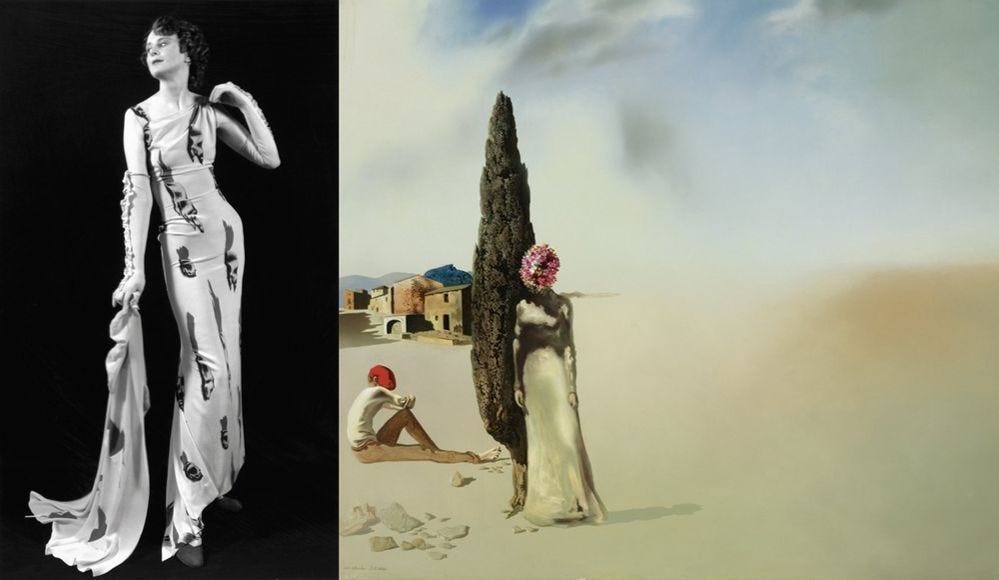
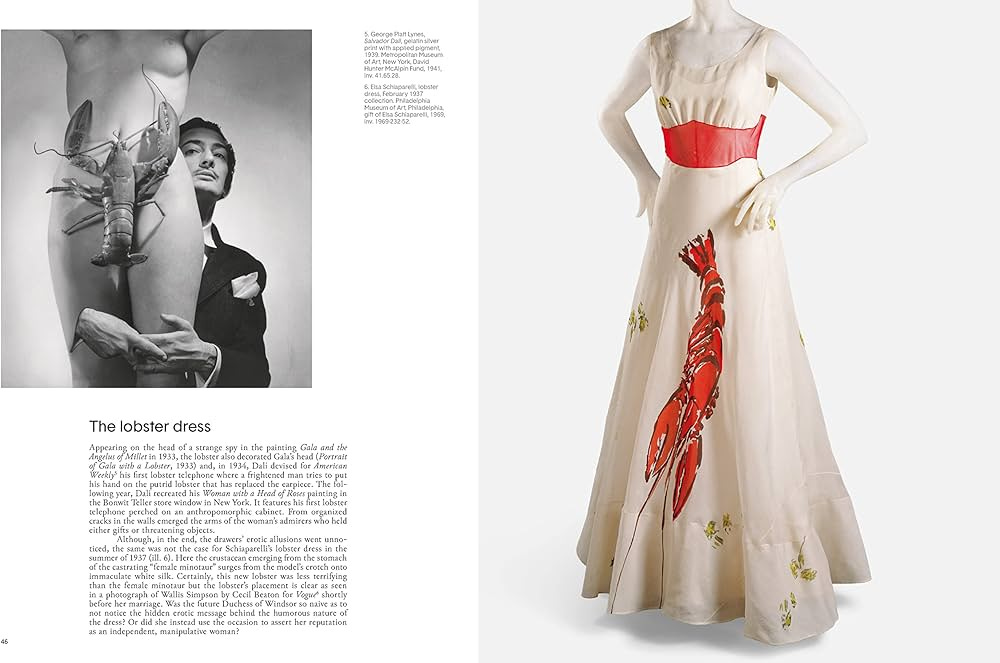
By the 1970s and 1980s, Avant-Garde fashion had matured into a radical form of high design, shaped in large part by a trio of visionary Japanese designers: Rei Kawakubo, Yohji Yamamoto, and Issey Miyake. Each approached clothing not as a medium of decoration, but as a means of communication, translating complex theories into tangible, often confrontational forms. Their work was not fashion in the traditional sense. It was a rejection of beauty as it had been defined.
Rei Kawakubo’, founder of Comme des Garçons, challenged conventional ideals of femininity by completly ignoring the traditional silhouette. Her pieces are works of sculpture, alluring asymmetry, strange negative space and distortion. They were and are not flattering, nor were they supposed to be. They were jarring, cerebral, and unapologetically abstract, forcing audiences to confront what they expected clothing to do, and what it could become.
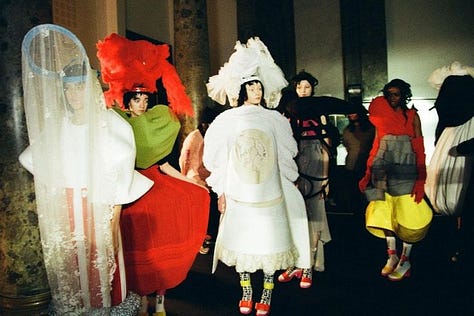
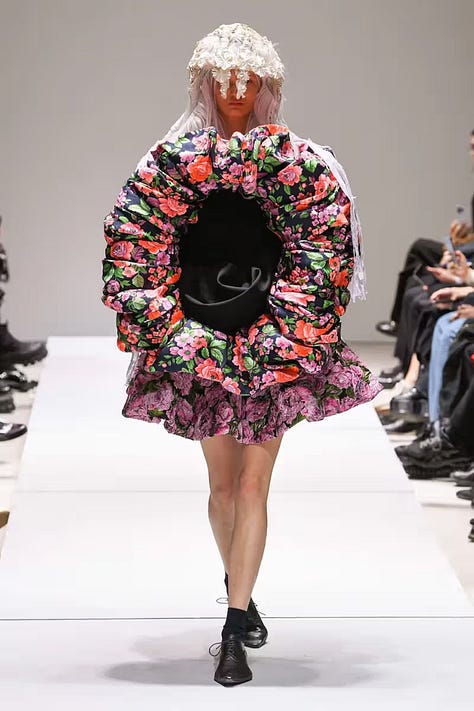
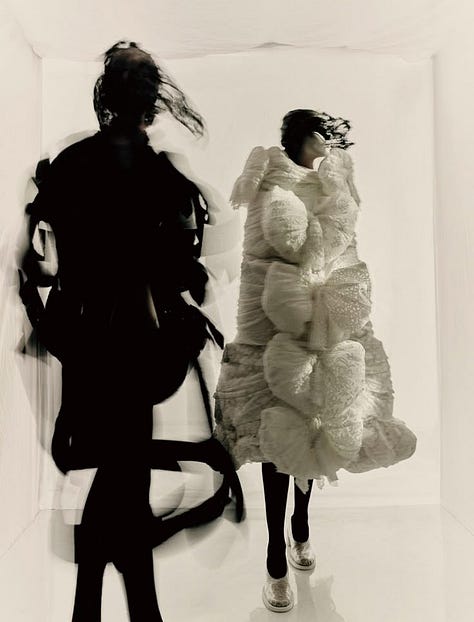
Yohji Yamamoto offered a different kind of disruption. His work unfolded slowly, in the language of drapery and shadow. With a palette often limited to black, he blended Eastern and Western traditions into garments that moved with deliberate restraint. His designs resisted fixed interpretations of gender and identity, allowing ambiguity to take shape not as confusion, but as freedom.
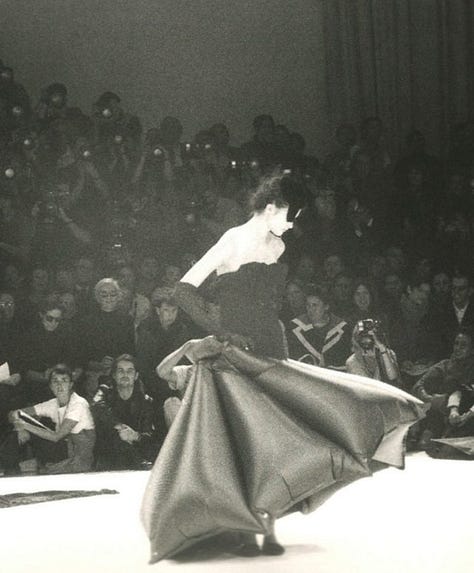
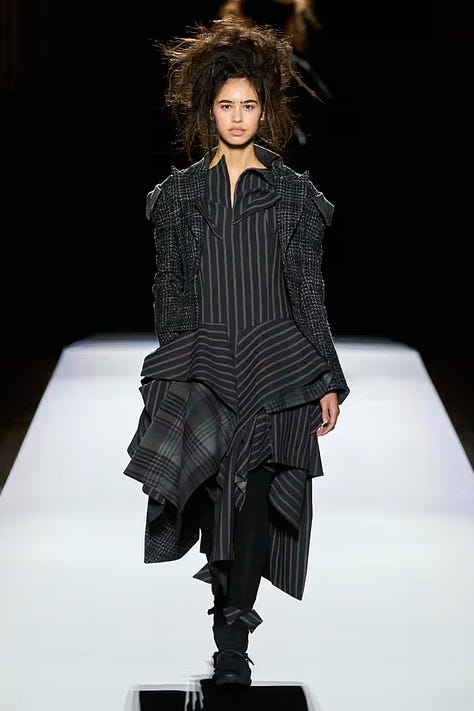
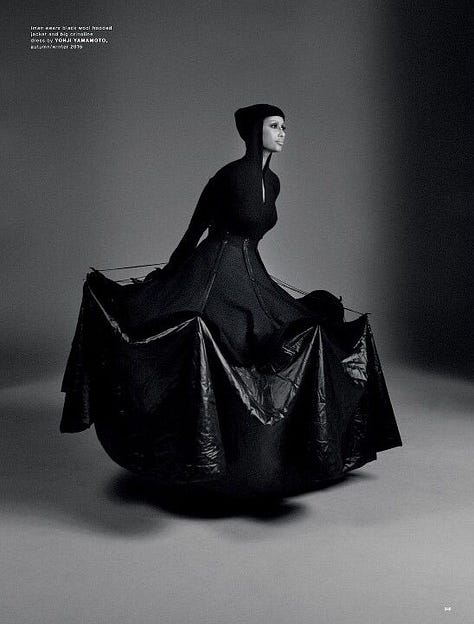
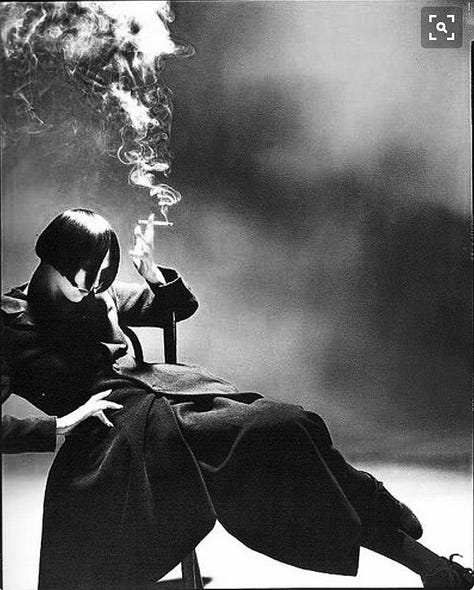
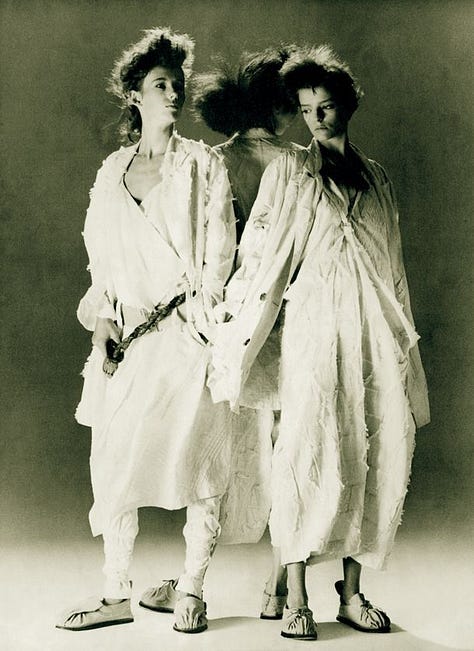
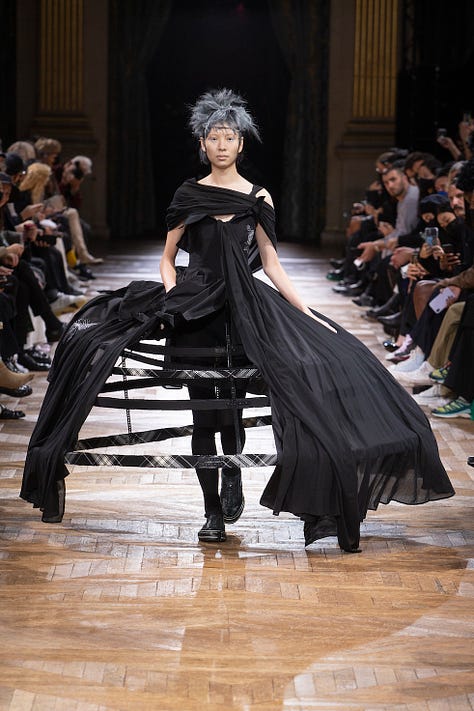
Issey Miyake brought something rare to the Avant-Garde: a sense of possibility. Where others deconstructed, he reimagined. He infused the form with optimistic futurism through technological innovation and radical textile experimentation. His garments often moved like sculptures, as if architecture had learned to breathe. The spirit of Blade Runner (1982) lingers in his work, not just in its aesthetic futurism, but in its philosophy—a vision of hybridity where humanity and machine begin to blur.
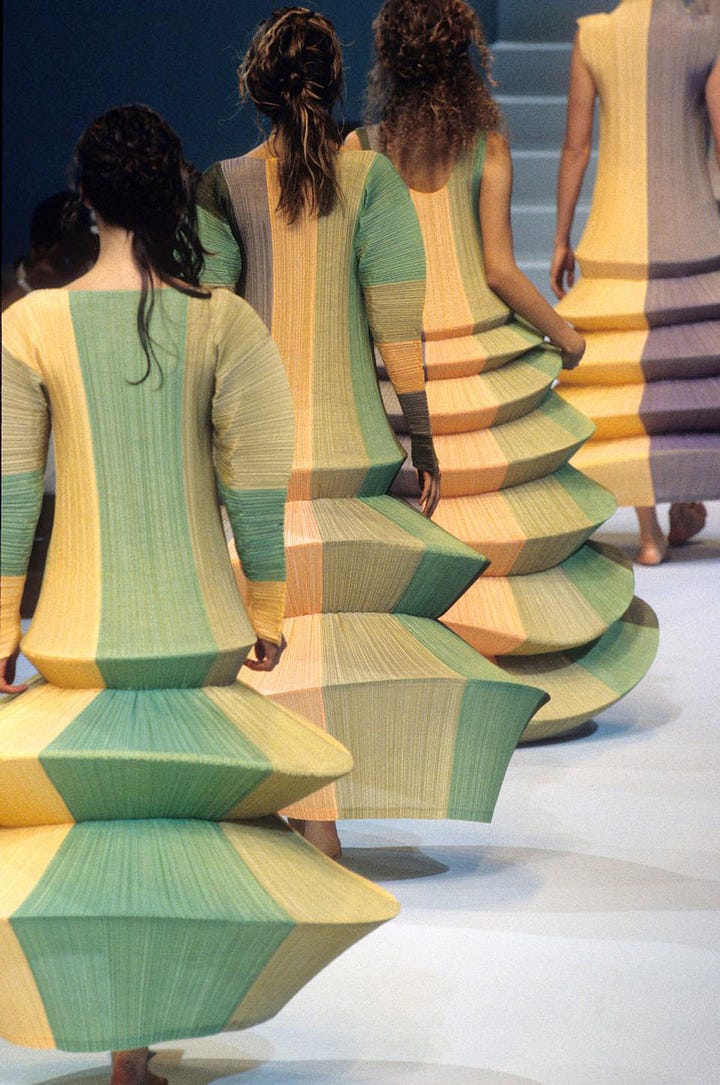
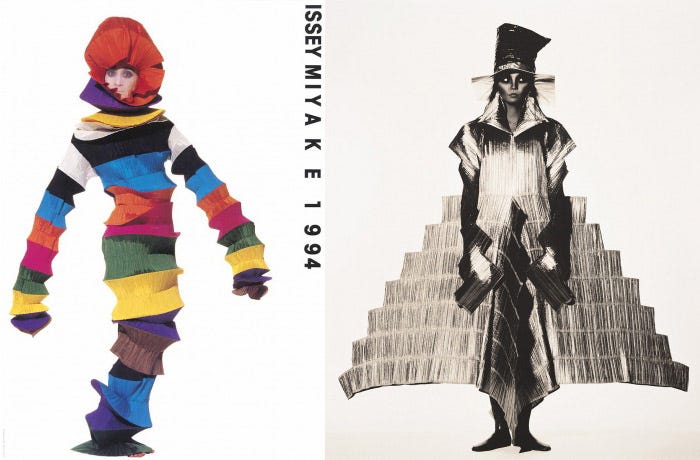
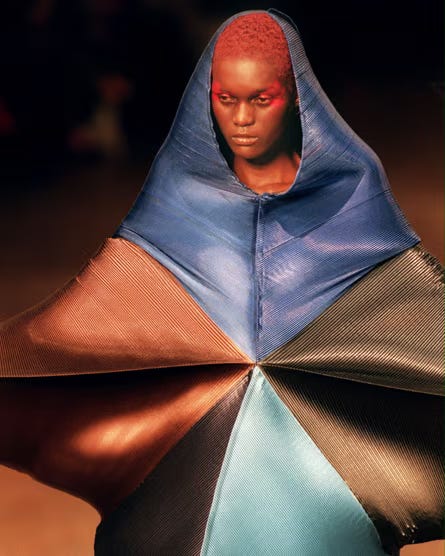
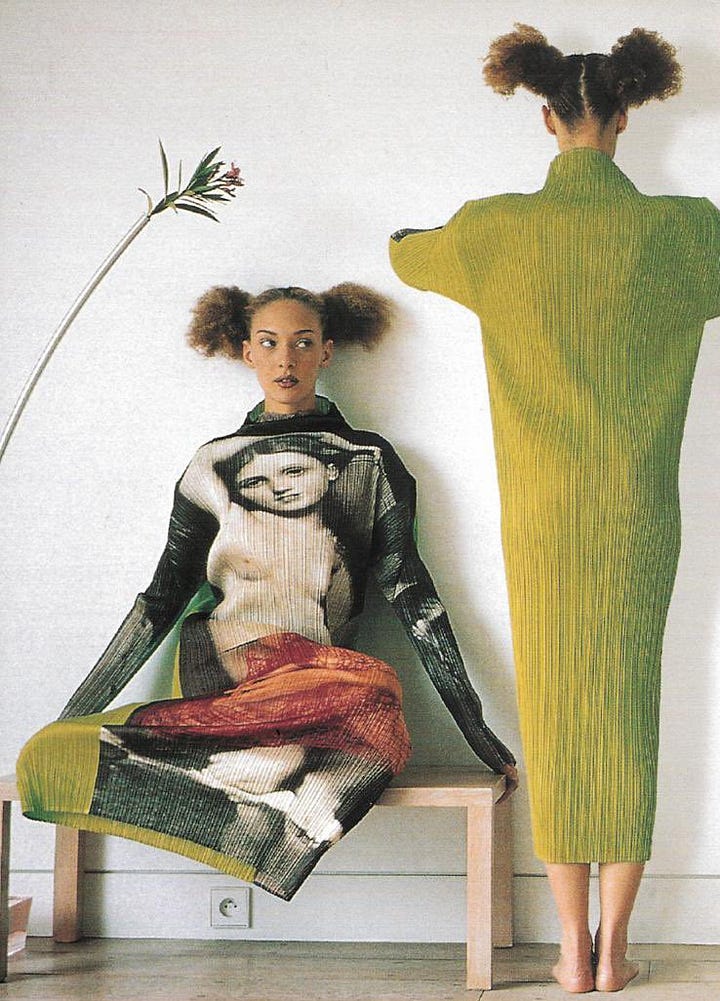
In Belgium, a quieter revolution was taking shape. The Antwerp Six, including Ann Demeulemeester and Dries Van Noten, merged fine art with wearability, restraint with androgyny. Their work did not demand attention through spectacle, but through depth. These were garments that carried thought. They believed that fashion could be more than just clothing, it could be a way to express philosophy and individual thought.
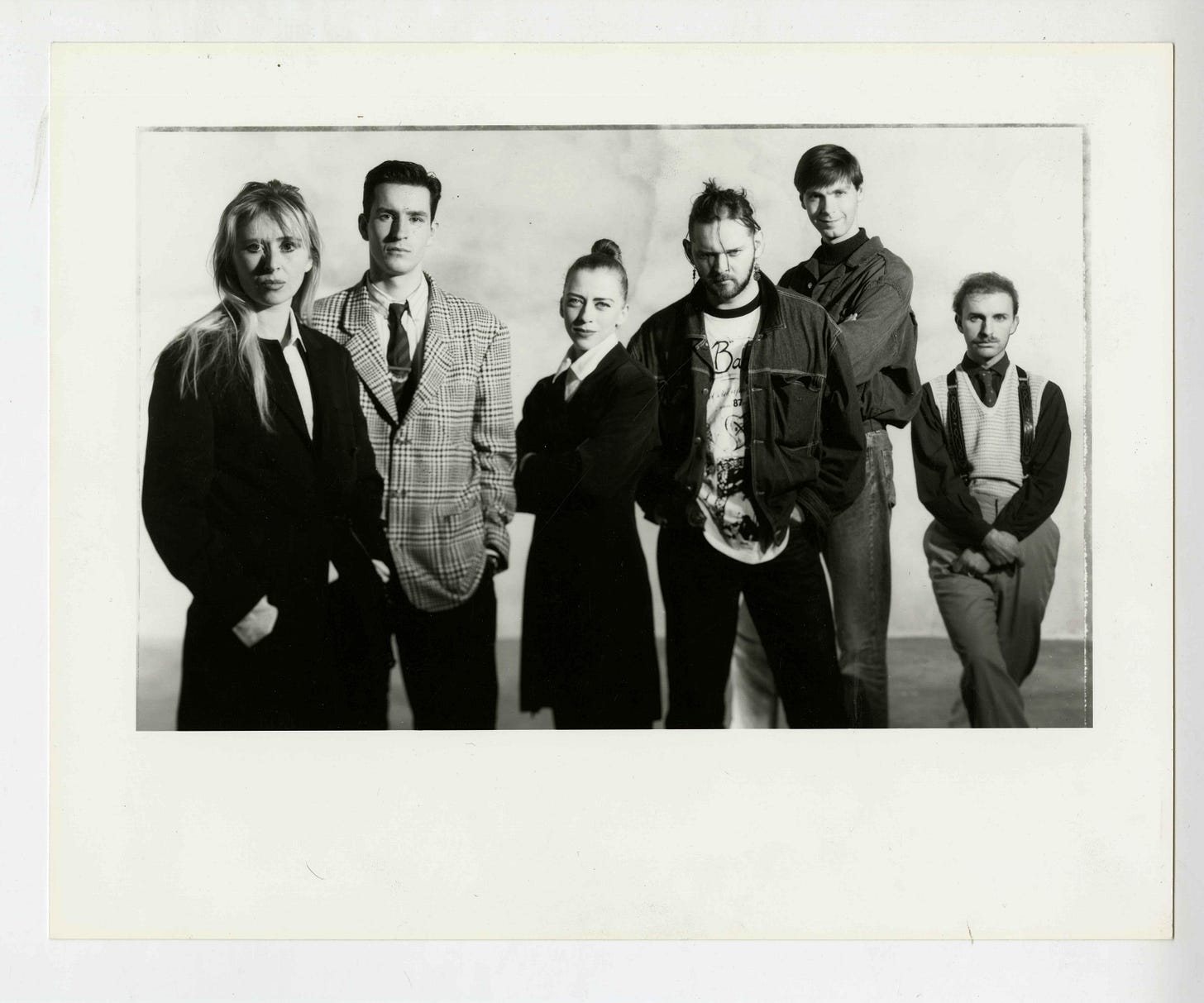
As the twenty-first century began, a new generation of designers emerged to push Avant-Garde fashion into realms shaped by science, spectacle, and existential critique.
Iris van Herpen introduced a technical and biological dimension to the form. She used 3D printing and laser-cut fabrics to create the illusion of marine life, neural networks, and flowing water. Her designs didn’t follow the body’s contours, but rather extended from it, creating intense waves of movement, her models appearing larger than life and sometimes, barely human.
Rick Owens developed an aesthetic centered on reduction, distortion, and control. He uses exaggerated proportions, stark, incredibly minimal palettes, and sculptural layering to create silhouettes that feel more architectural than anatomical. Padded nylon, wool, and leather are used to create looks, not outfits, that have an implication of ritual, yet at the same time, protection and collapse. His mood is consistently severe; he is not a man of decoration, but of sheer aesthetic discipline.
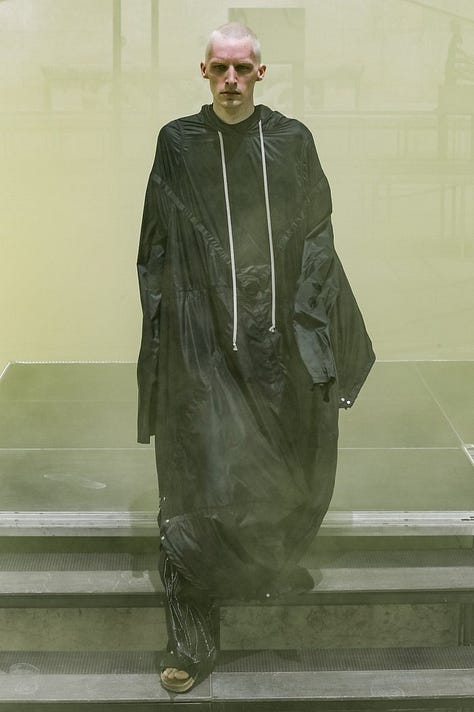
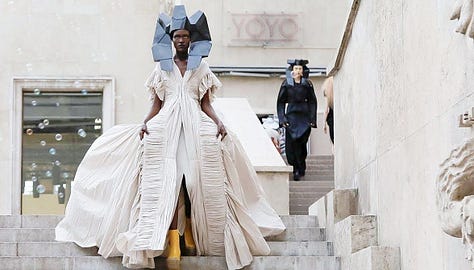
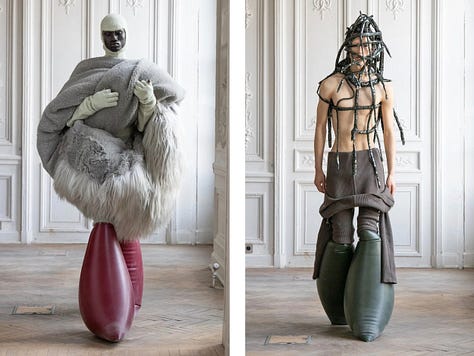
At Balenciaga, Demna redirected the Avant-Garde, infusing subversive, political commentary into the message and meaning of the show. In Fall 2022, models walked through a manufactured snowstorm wearing blown-out outerwear and face shields, the underlying political statement of climate change was used in a literally difficult manner, forcing the models to trudge across the stage against the prevailing winds. The runway was harsh, designed to make the audience and all it’s viewers physically uncomfortable. The silhouettes were familiar but deliberately off, feelig barren, lost, and alone.
It is important to note that the “Avant-Garde” that is now commerically available in trend cycles and fast fashion are nothing more than poor imitations of the aesthetics true design.
They adopt the aesthetic markers (asymmetry, volume, dark palettes), without carrying forward the conceptual burden, and therefore, render themselves as nothingness. True Avant-Garde resists commodification. It is anti-practical, often unwearable, and inherently resistant to replication. The purpose is not to create costumes for the eccentric or edgy; they are philosophical statements, often unsettling, sometimes unreadable. To dress in this mode is not to make a fashion choice, it is a choice to challenge the very structure that defines what fashion is for. Avant-Garde refuses to flatter, it’s not worn to please, it’s worn to provoke.
THE MOST ICONIC EMBODIMENT OF AVANT-GARDE IS REI KAWAKUBO.
Rei Kawakubo, founder of Comme des Garçons, is widely regarded as the single most influential force in defining the Avant-Garde within fashion. Since the 1980s, her work has rejected not only conventional beauty, but the very premise of fashion as a system. She pioneered the use of deconstruction in her 1982 Paris debut, presenting black, asymmetrical garments that Western critics famously derided as “Hiroshima chic”, a response that revealed how unprepared the industry was for her radical vision. Her designs are not intended to please the eye or flatter the body; they are studies in void, volume, tension, and resistance. As architect Rem Koolhaas once said of her work, “She does not care if you understand. That’s not the point.”
THE BEST FICTIONAL EMBODIMENT OF AVANT-GARDE IS EFFIE TRINKET.
Effie Trinket in the realm of The Hunger Games is a creation of striking design. Her wardrobe features extreme silhouettes, rigid structures, and theatrical headpieces, garments that are not designed for comfort or beauty, but for spectacle and control. Designed by Trish Summerville, her looks blend haute couture, historical excess, and surrealism into a vocabulary of power divorced from empathy. In this world, clothing functions as propaganda, and Effie’s appearance is a carefully constructed performance of compliance, status, and cultural detachment. Within the context of Avant-Garde theory, Effie serves as a narrative device: a character who wears fashion not as expression, but as architecture, propaganda, and ideological armor. They ask the viewer to confront the absurdity of luxury in a world built on suffering.
IN SUMMARY, LET’S REVIEW THE CORE COMPETENCIES OF THE AVANT-GARDE AESTHETIC:
1. Experimental Silhouettes
Avant-Garde silhouettes do not flatter, they interrogate. Shapes are exaggerated, asymmetrical, or alien in proportion, not to beautify the body but to obscure, challenge, or reframe it entirely.
2. Deconstruction + Reconstruction
Raw hems, exposed linings, reversed seams, or garments split apart and stitched back together are not signs of incompletion, they are the concept. These garments interrupt narrative and resist closure.
3. Conceptual Influences
Avant-Garde collections begin with an idea, not a moodboard. Whether drawing from architecture, digital technology, philosophy, or performance art, Avant-Garde fashion is a vessel for theory. They are conceptual arguments.
4. Unconventional Materials
Avant-Garde garments are not always made of fabric, as that would be too conventional and too comfortable. The materials used are chosen for their tension against tradition and the way in which they can communicate their message outward; for their ability to evoke, distort, or erase expectations.
5. Anti-Trend Ideology
Avant-Garde fashion does not follow cycles. It is not interested in relevance, desirability, or resale value. These garments are not made to be popular, they are made to endure misinterpretation.
Finally, Avant-Garde fashion is for those who see the world differently.
It is for those who see fashion as an extension of thought, an exploration of the future, an abstraction of form. It exists beyond seasons, beyond practicality, beyond the limitations of the human body itself.
To embody this archetype is to challenge what clothing is, and to transform oneself into a walking piece of art.
“When you don’t dress like everyone else, you don’t have to think like everyone else.” Iris Apfel
With great personal aesthetic,
Alexandra Diana, The A List
Archetype Activation:
Write down a list of societal norms regarding clothing. Which ones do you allow? Which ones do you follow without thinking, and which ones do you want to break? Consider your wardrobe a mirror, what does the way you dress say to the world? What would you change, and most importantly, how would you embody this change?





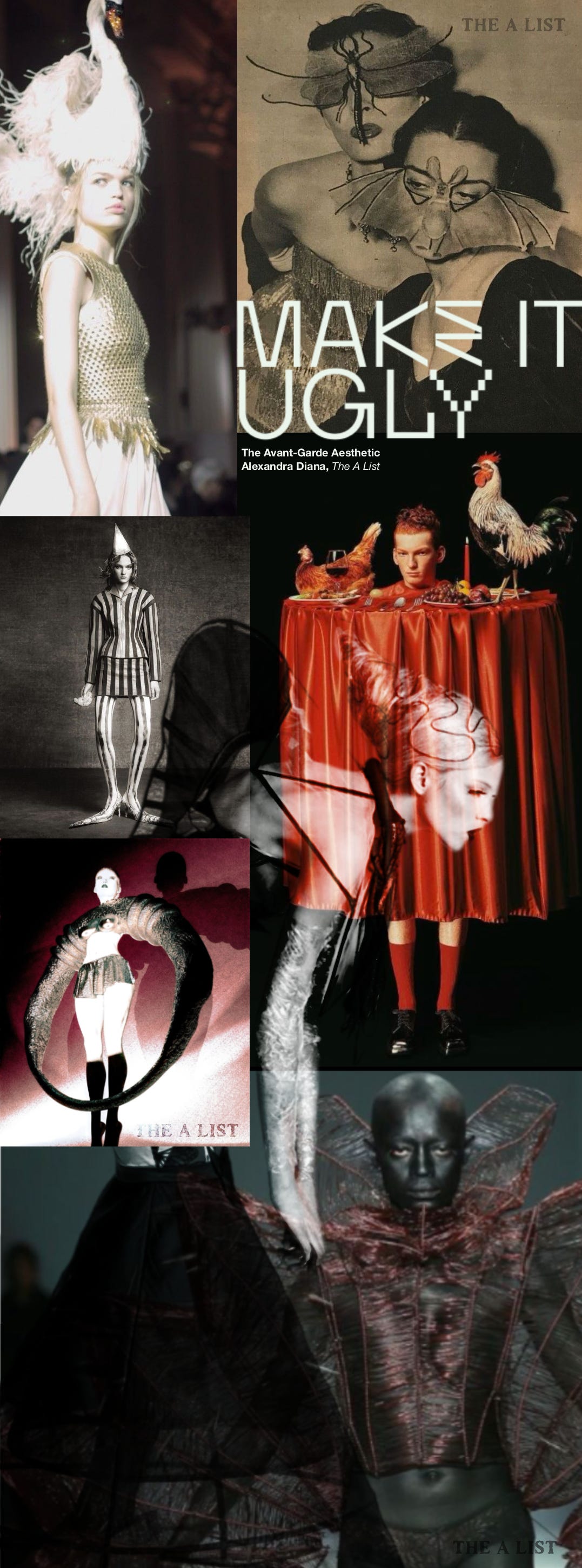
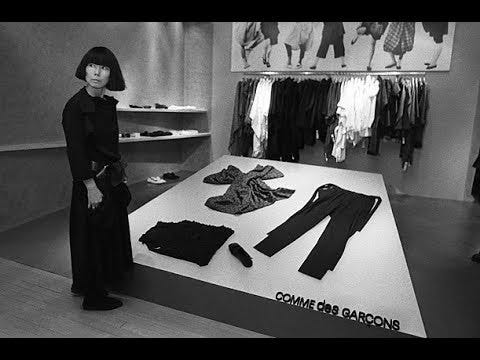
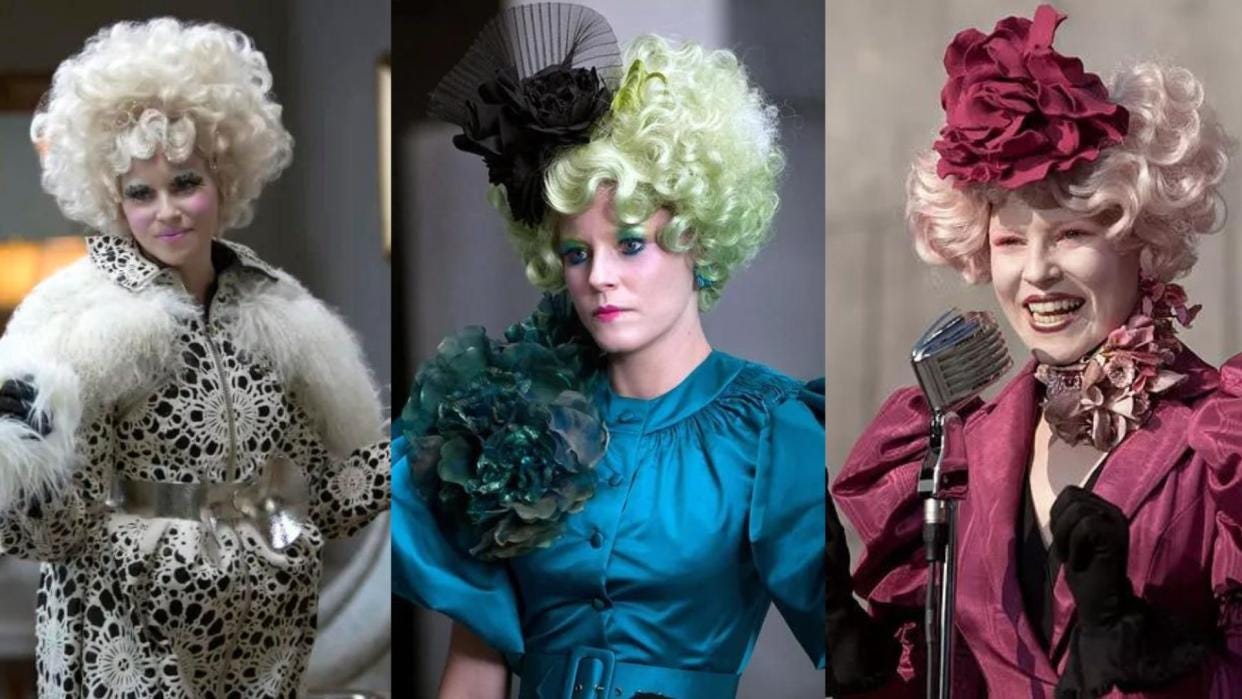




Your work is so unique and entrancing!
So full transparency, cant sleep for the life of me and kinda sorta chain smoking tonight, but this piece was exactly what i needed, i adored every word!!!
I promise i wont span but highkey about to read every article you have